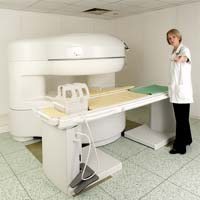Predicting Mesothelioma Prognosis with PET/CT
 There is new evidence that the rate at which mesothelioma tumors metabolize glucose could provide significant prognostic information for mesothelioma patients and their doctors.
There is new evidence that the rate at which mesothelioma tumors metabolize glucose could provide significant prognostic information for mesothelioma patients and their doctors.
Pleural mesothelioma is an especially fast-growing asbestos-linked malignancy. It typically carries a grim prognosis but several factors can impact mesothelioma survival, including tumor characteristics that can only be measured using advanced PET/CT imaging.
Now, researchers in Japan say one of those characteristics, known as total lesion glycolysis (TLG), is especially valuable for determining mesothelioma prognosis.
What is FDG PET/CT?
Available primarily at larger cancer centers, positron emission tomography/computed tomography with fluorodeoxyglucose (FDG PET/CT) is an advanced nuclear imaging test for measuring the aggressiveness of cancers like malignant mesothelioma.
PET with FDG is used to determine the metabolic rate of a mesothelioma tumor by measuring how quickly the cells absorb the tracer (the “uptake” rate), the metabolic tumor volume (MTV), and the rate at which glycolysis is happening in all of a patient’s mesothelioma lesions (TLG).
At the same time, computed tomography (CT) creates three-dimensional images of the cancer.
PET/CT in Mesothelioma Prognosis
To analyze just how valuable these various measurements – and others – are in overall mesothelioma prognosis, researchers at the Hyogo College of Medicine in Japan reviewed data from 201 pleural mesothelioma patients, 38 of whom had undergone mesothelioma surgery.
After 15 months, the team determined that three factors seemed to be consistently related to poorer mesothelioma survival.
“A multivariate analysis confirmed non-epithelioid subtype, non-surgical treatment, and high TLG as independent negative predictors,” writes author Kazuhiro Kitajima with the Division of Nuclear Medicine and PET Center at Hyogo College of Medicine. “Pretreatment volume-based quantitative 18F-FDG PET/CT parameters, especially TLG, could serve as potential surrogate markers for malignant pleural mesothelioma prognosis.”
TLG has already been found to be a valuable prognostic factor in lung and other cancers. The new mesothelioma study appears in the European Journal of Radiology.
Other Prognostic Factors in Mesothelioma
Many other potential prognostic factors have been proposed for mesothelioma, including a number of biomarkers found in the blood serum, tissue, or lung fluid.
Elevated levels of proteins such as mesothelin, activin A, and fibulin-3, neutrophil-to-lymphocyte ratio and BAP1 gene mutation have all been linked to mesothelioma prognosis.
In addition, people who are younger, women, and patients with the epithelioid subtype of mesothelioma tend to experience higher rates of mesothelioma survival.
Source:
Kitajima, K, et al, “Prognostic value of pretreatment volume-based quantitative 18F-FDG PET/CT parameters in patients with malignant pleural mesothelioma”, January 2017, European Journal of Radiology, PP 176-183





